No, the recently unveiled Lotus Eletre R isn’t the fastest SUV in the world. That honor rightly goes to Faraday’s FF91, introduced back in 2018. There’s zero intention here to diminish the Eletre in any way. That car (since it uses a unibody construction) is a marvel of electric technology, especially its aiHyper 6x4 Architecture 2.0 operating system.
Sentiments aside, the FF91 and several others on this list are more an SUV than the beastly Eletre CUV (crossover utility vehicle). Not only does the FF91 accelerate faster, but its top speed of 200 mph (according to Faraday) is a significant lead ahead of Eletre’s 165 mph top speed.
So, while Eletre’s unveiling and performance figures are supremely impressive, it, in fact, did not earn the “fastest SUV in the world” crown as publicized by some auto journos. Provided you have enough supply of cash to buy the speed to meet your need, we're happy to present you a thrilling list of the fastest-performance SUVs in the world right now, including the 2024 Lotus Eletre R.
Related Reading: Meet The All-New 2024 Ford Explorer Electric
11. 2021 Bentley Bentayga V8 First Edition
- 0–60 MPH Acceleration: 3.3 Seconds
- Quarter Mile Acceleration: 11.9 Seconds
- Top Speed: 190 MPH
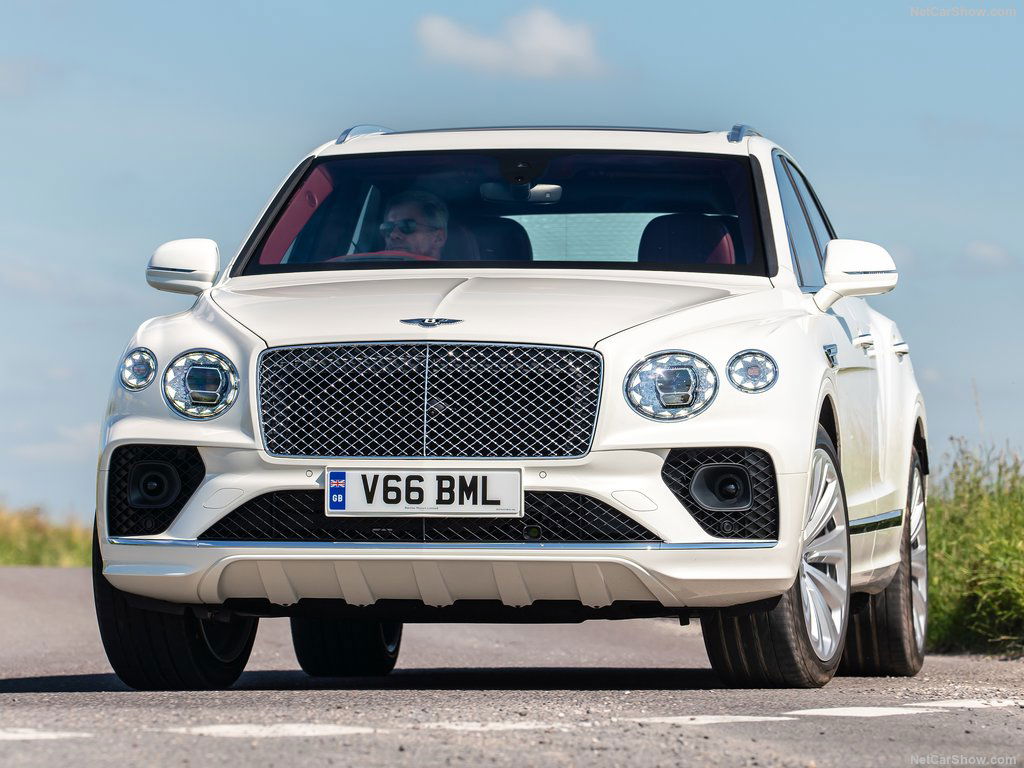
Bentley refreshed the Bentayga's looks in 2021, blessing it with a more upright grille, updated taillamps, and fresh wheel designs. This SUV’s design drew inspiration from the then-new Continental GT coupe and Flying Spur sedan.
Inside the cabin, notable enhancements included a 10.9-inch infotainment screen, refined dashboard styling, Apple CarPlay compatibility, an improved rear-seat entertainment system, and a wireless smartphone charging pad.
Bentley offered various powertrains for the Bentayga, starting with a 443-hp hybrid setup featuring a turbocharged 3.0-liter V6 mill and e-motor. The alternative engine was a 542-horsepower twin-turbo V8 engine, which is responsible for accelerating the ultra-luxury SUV from 0 to 60 mph in a brisk 3.3 seconds.
The Bentayga Speed variant brought a powerful W-12 engine to the mix, but we don't care about that. We prefer the teeth-rattling V8, and that's not just because the W-12 comes with a substantial price premium over the V8 version.
10. 2018 Alfa Romeo Stelvio Quadrifoglio Q4
- 0–60 MPH Acceleration: 3.3 Seconds
- Quarter Mile Acceleration: 11.8 Seconds
- Top Speed: 177 MPH

The 2018 Alfa Romeo Stelvio stood out in the crowded crossover market. Its distinct Italian flair set it apart from the segment's often mundane and predictable offerings. In its base configurations, the Stelvio impresses with a robust 280-horsepower 2.0-liter turbocharged engine, an impressive cocktail that aligns with the preferences of American consumers.
However, the real excitement begins with the Stelvio Q4 Quadrifoglio variant, boasting a remarkable 505-horsepower output at an angry 6,500 rpm and a torque of 443 ft-lbs that peaks between 2,500 and 5,000 rpm.
This power is harnessed from a 90-degree 2.9-liter twin-turbo V6 engine that, despite a now-recognized brief moment of turbo lag, delivers an exhilarating surge of smooth and relentless power up to its 6,500 rpm redline.
The 8-speed automatic transmission complements this experience with snappy shifts and the added thrill of burbling exhaust gasps from the turbo wastegate.
The Stelvio's Q4 All-Wheel Drive (AWD) system adds to its performance appeal, offering precision handling without compromising the dynamics of rear-wheel drive (RWD). This advanced AWD system swiftly disperses power, switching to AWD within 0.15 seconds when it detects traction loss.
Seasoned test drivers admitted they'd never driven an SUV with such a confident grip of the road. Under normal road conditions, the Q4 system prioritizes performance and acceleration. On paper, the 0-60 acceleration time is 3.6 seconds; the real-world figures tell a unique story.
9. 2021 Audi RS Q8
- 0–60 MPH Acceleration: 3.3 Seconds
- Quarter Mile Acceleration: 11.7 Seconds
- Top Speed: 189 MPH
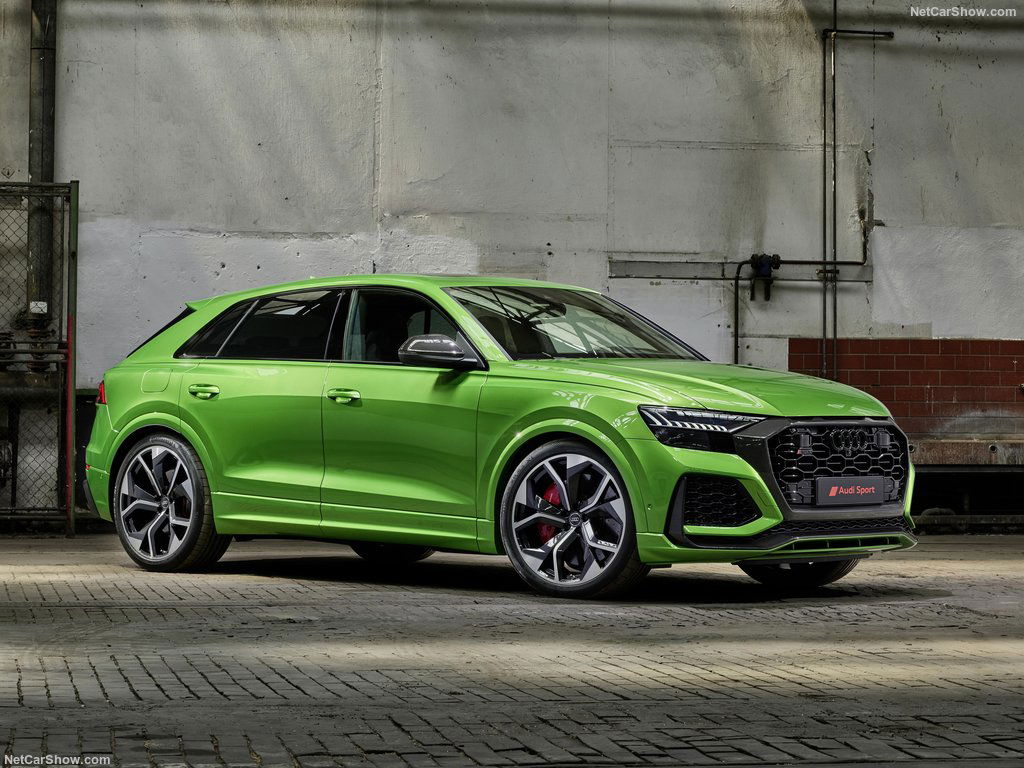
The 2021 Audi RS Q8 is a pinnacle of performance and power in the SUV segment. At its core lies a formidable 4.0-liter twin-turbocharged V8 engine, complemented by mild-hybrid technology.
This powertrain generates a commanding 591 horsepower and a robust 590 lb-ft of torque, promising exhilarating acceleration and ample overtaking capabilities.
Mated to an eight-speed automatic transmission, power gets seamlessly distributed to all four wheels through Audi's renowned Quattro all-wheel drive system. This setup translates into a jaw-dropping 0-60 mph acceleration time of approximately 3.3 seconds, demonstrating the RS Q8's sports car-like agility.
Furthermore, the RS Q8 benefits from adaptive air suspension and an active anti-roll stabilization system. The system ensures remarkable handling and cornering prowess. Whether cruising on the highway or tackling challenging curves, the 2021 Audi RS Q8 exemplifies the perfect blend of SUV practicality and high-performance thrills.
8. 2020 BMW X4 M Competition
- 0–60 MPH Acceleration: 3.3 Seconds
- Quarter Mile Acceleration: 11.6 Seconds
- Top Speed: 177 MPH

The 2020 BMW X4 M Competition is a performance-oriented SUV that shines in the powertrain and performance department. Under the hood, you'll find a 3.0-liter inline-six engine with M TwinPower Turbo technology. This engine produces an impressive 503 horsepower and 442 lb-ft of torque.
All that power travels to all four wheels through an eight-speed M Steptronic automatic transmission. This transmission was designed to provide rapid and precise gear shifts, enhancing the X4 M Competition's performance capabilities.
The X4 M Competition features BMW's M xDrive all-wheel drive system, which allows for variable torque distribution between the front and rear axles. This system enhances traction and stability while still retaining a rear-wheel-drive bias for sporty handling.
To further elevate its performance, the X4 M Competition comes equipped with features like M Sport exhaust, adaptive M suspension, and M Compound brakes. These components contribute to its dynamic driving experience and cornering agility.
7. 2023 Aston Martin DBX 707
- 0–60 MPH Acceleration: 3.1 Seconds
- Quarter Mile Acceleration: 11.4 Seconds
- Top Speed: 193 MPH
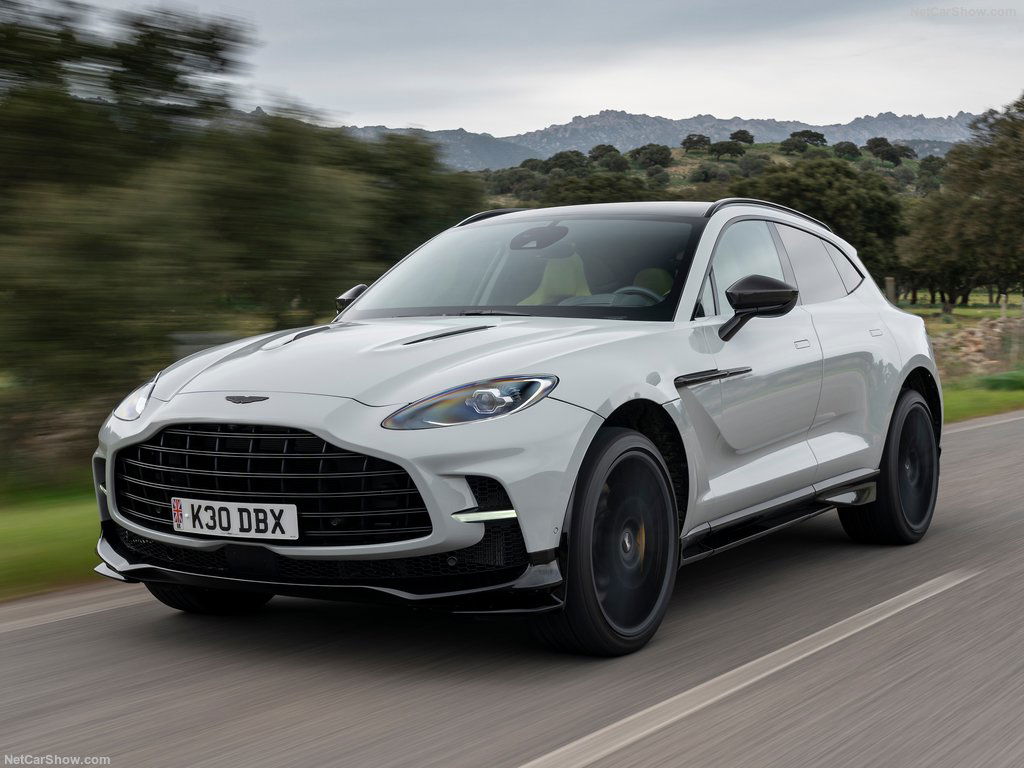
The DBX represents Aston Martin's foray into the world of SUVs, matching, in tandem, with sports car manufacturers venturing into new territory.
The DBX, by Aston Martin's standards, has proven remarkably successful in translating the brand's signature sports car design language onto the SUV canvas. Being well aware of the evolving ICE era, Aston Martin knows this is an ill-fitting time to hold back on horsepower.
In comparison to the standard DBX, which already wields an impressive 542 horsepower from its AMG-supplied twin-turbo 4.0-liter V8, the new DBX 707 model takes power to a whole new level, boasting a substantial 697 horsepower (or 707 PS, in European terms).
This enhanced power output is achieved through a range of modifications to the same 4.0-liter V8 engine powering the standard DBX, including new turbochargers, redesigned induction and exhaust systems, and a reprogrammed engine control unit.
While the standard DBX accelerates to 60 mph in a respectable 3.9 seconds, it finds itself outpaced by competitors such as the Audi RS Q8, Bentley Bentayga V8, Mercedes-AMG GLE63 S, and even the Maserati Levante Trofeo.
In the quest for bragging rights, the more muscular DBX 707, benefiting from a shorter 3.27:1 final-drive ratio, steps up its game, slashing the 60-mph benchmark to an impressive 3.1 seconds and achieving 100 mph in just 7.9 seconds. It further impresses with a quarter-mile time of 11.4 seconds at 119 mph and a claimed top speed of 193 mph.
6. 2022 Porsche Cayenne Turbo GT Coupe
- 0–60 MPH Acceleration: 2.9 Seconds
- Quarter Mile Acceleration: 11.2 Seconds
- Top Speed: 186 MPH
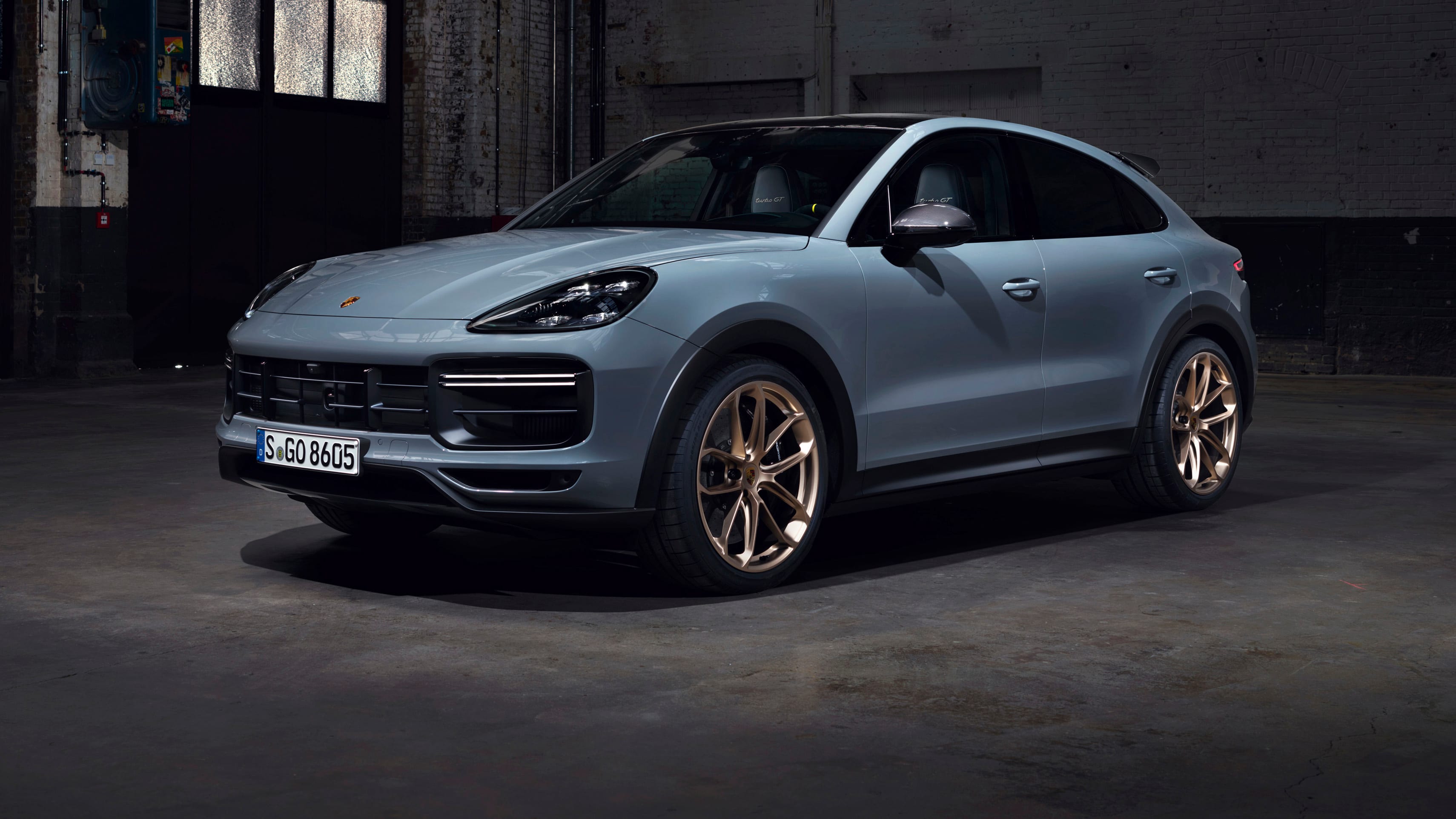
The automotive world witnessed the emergence of a new phenomenon with the birth of a performance SUV embodied by the Porsche Cayenne. The year was 2003 – the year that legitimatized the idea of sports car drivers reluctantly yielding the right of way to these faster, bulkier SUVs. The unthinkable had finally happened.
Fast forward a decade and a half, and Porsche, along with other manufacturers, has honed this concept, birthing a class of super SUVs capable of not only impressing on challenging back roads but also rivaling the rarest of supercars. The 2022 Porsche Cayenne Turbo GT represents the pinnacle of this evolution.
At first glance, the Cayenne Turbo GT may not seem dramatically different from its sibling, the Cayenne Turbo Coupe. However, a closer examination reveals a subtle distinction: the Cayenne Turbo GT sits approximately three-quarters of an inch lower than the Cayenne Turbo, earning its reputation as a discreet sleeper.
Beneath its unassuming exterior, the Cayenne Turbo GT houses a host of captivating changes. Notably, the familiar 4.0-liter twin-turbo V8 engine from the Cayenne Turbo undergoes a transformative overhaul that includes a titanium exhaust system.
This reengineering results in a substantial power boost from the standard 541 hp and 567 lb-ft of torque to an impressive 631 hp and 626 lb-ft of torque.
Remarkably, these figures place the Cayenne Turbo GT within a mere 10 horsepower and 1 lb-ft of torque behind the Lamborghini Urus (Urus shares platform and engine with the Porsche), solidifying the Cayenne Turbo GT's street cred as a formidable performance SUV.
Related Reading: Top 10 Road-Going Highest Horsepower Cars For Rich People
5. 2020 Kar Tunz Lamborghini Urus
- 0–60 MPH Acceleration: 2.7 Seconds
- Quarter Mile Acceleration: 10.9 Seconds
- Top Speed: 190 MPH

This exceptional SUV, the 2020 Lamborghini Urus modified by Robert Patel's Kar Tunz, redefines the notion of speed, paired with a unique underbody lighting system for added flair. With its launch-control system engaged, this Urus catapults off the line and sprints to 60 mph in a mere 2.7 seconds, showcasing its extraordinary acceleration capabilities.
The quarter-mile is devoured in an astonishing 10.9 seconds at 125 mph, establishing it as not only the fastest SUV Car and Driver ever tested at the time but also outpacing the stock Urus by a noteworthy half-second in both measurements. We expect the top speed to, at least, slightly exceed the stick Urus’ 190 mph.
Impressively, it reached 60 mph quicker than a Porsche 911 Carrera and left a C8 Corvette in the dust at the drag strip. Maintaining the throttle unleashes this 5140-pound SUV, leaving the stock Urus trailing by almost two seconds when reaching 150 mph.
For perspective, Lamborghini's first SUV, the 444-hp V12-powered LM002 from 1987, took 7.7 seconds to reach 60 mph and finished the quarter-mile in 16.0 seconds at 86 mph. With over 700 horsepower, Robert Patel's Kar Tunz-modified 2020 Lamborghini Urus held the crown of the swiftest SUV the magazine ever tested.
Patel’s mods included Ghost Motorsports lowering links that lowered the Lambo by approximately 0.5 inches. Despite these modifications, the Urus retained its factory summer tires, Pirelli P Zero PZ4, sized 285/35R-23 in the front and 325/30R-23 at the rear.
4. 2024 Lotus Eletre R
- 0–60 MPH Acceleration: 2.7 Seconds
- Quarter Mile Acceleration: 10.3 Seconds
- Top Speed: 165 MPH
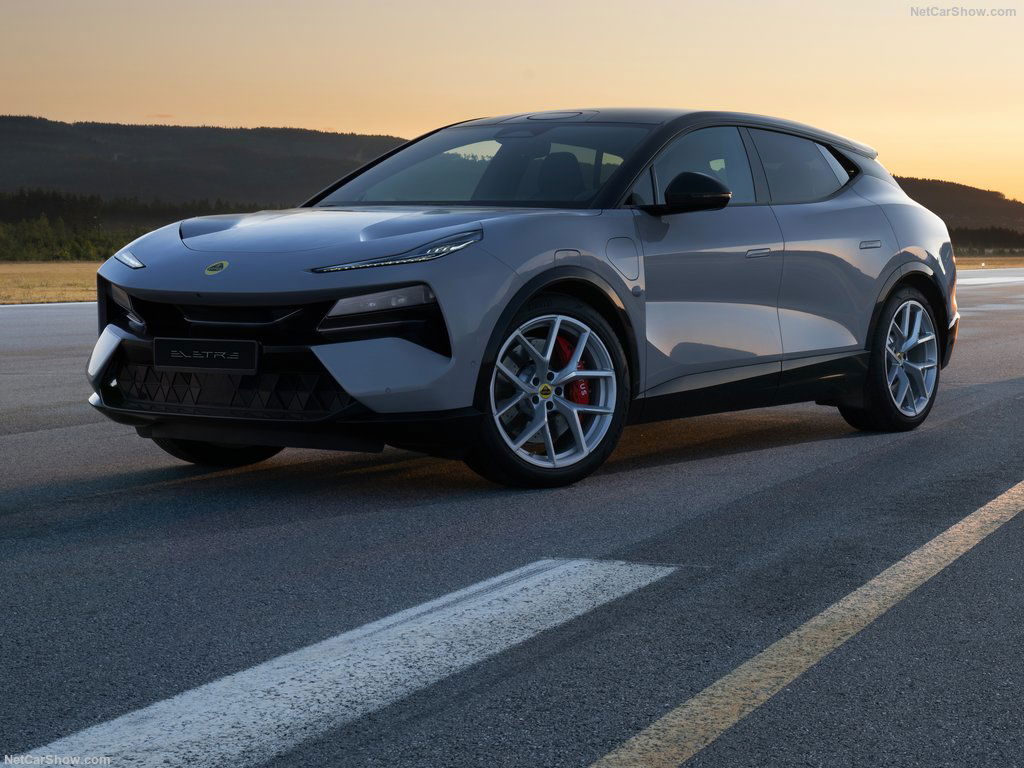
Lotus made its bed crafting lightweight, high-performance sports cars, but the British marque is embarking on a new path with the introduction of the Eletre—a departure from its traditional offerings.
The Eletre is a high-performance electric SUV produced in China and slated for a U.S. release in 2023. While its larger battery pack imparts extra weight, the Eletre maintains robust acceleration, courtesy of powerful electric motors capable of no less than 603 horsepower.
Lotus sets its sights on the competitive electric SUV market, aiming to rival models like the Audi e-tron and BMW iX. Interestingly, the Eletre bears a striking resemblance to the eye-catching Lamborghini Urus.
Powering the Eletre's base model is a dual-motor all-wheel-drive setup delivering 603 horsepower and likely enabling a 0-60 mph time of 4.2 seconds. However, the top-tier R variant boasts an astounding 905 horsepower, potentially catapulting the CUV to 60 mph in a mere 2.7 seconds.
Despite the impressions suggestive of the Eletre as a swift and comfortable performance SUV, we don’t expect it to mirror the nimbleness associated with Lotus's sports cars.
3. 2018 Hennessey Jeep Trackhawk HPE1000
- 0–60 MPH Acceleration: 2.5 Seconds
- Quarter Mile Acceleration: 10.2 Seconds
- Top Speed: 200+ MPH
The 2018 Hennessey Jeep Trackhawk HPE1000 is an insane handiwork of the Texas-based Hennessey Performance tuning house. Supposedly, Hennessey thought a 717-horsepower Jeep Grand Cherokee Trackhawk was silly or not good enough.
So, Hennessey thought it made more sense to turn a family SUV with a household name into a 1,012-hp monster capable of accelerating to 60 miles per hour in a runway-tested 2.5 seconds.
Thanks to extensive modifications and a significant increase in power output by Hennessey Performance (basically a 4.5I supercharger at 14psi of boost supporting the V8 shared with the Charger and Challenger Hellcat and a potent AWD system), the Hennessey Trackhawk’s remarkable acceleration makes it one of the fastest SUVs on the market.
It essentially offers supercar-level performance in an SUV package. Specifically, it features a formidable 6.2-liter supercharged V8 engine, upgraded to crank 969 lb-ft of torque, far surpassing the stock Trackhawk's output.
2. 2023 Tesla Model X Plaid
- 0–60 MPH Acceleration: 2.5 Seconds
- Quarter Mile Acceleration: Undetermined
- Top Speed: 163 MPH
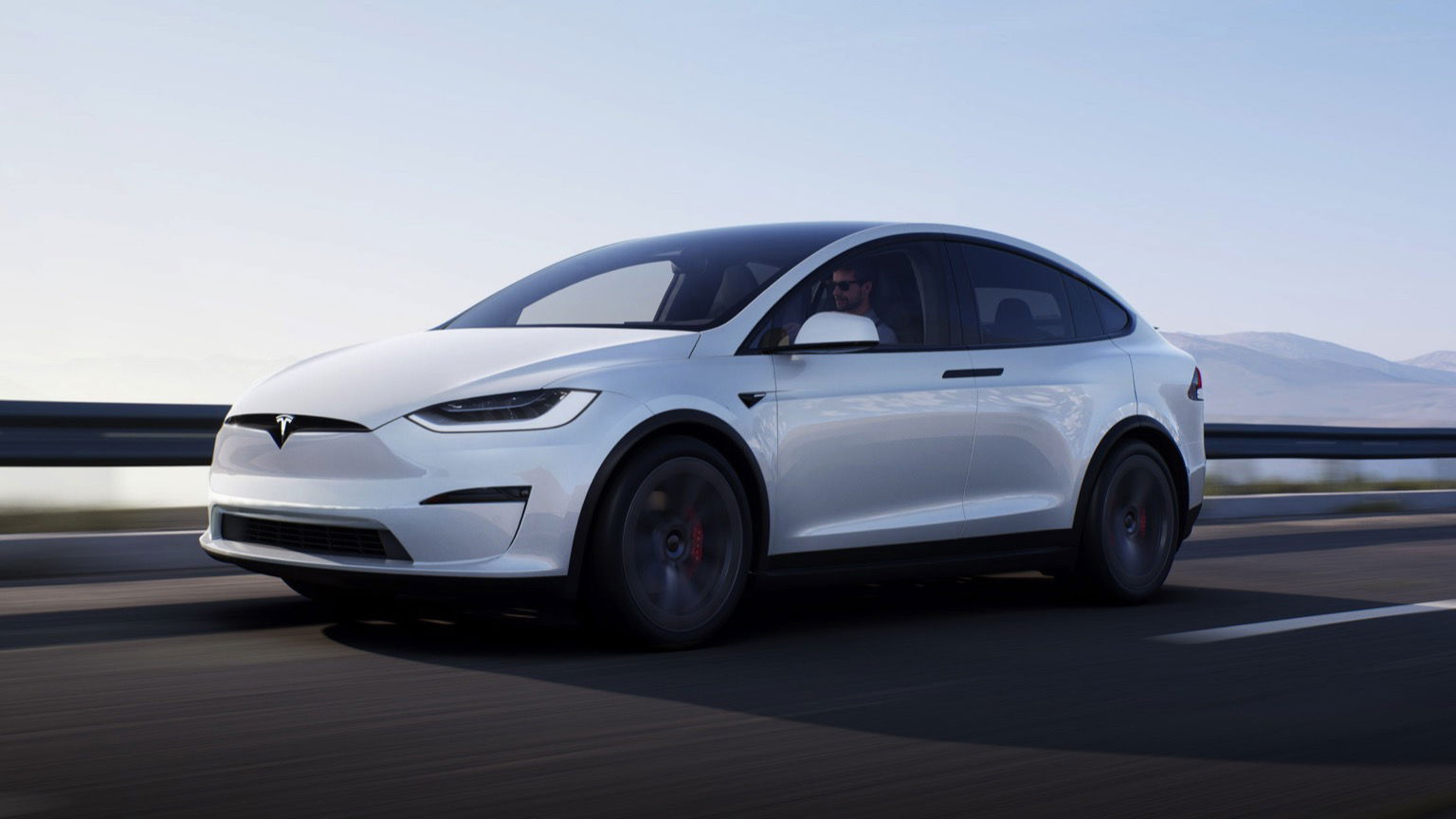
The standard Model X Long Range certainly offers impressive performance (670 horsepower and a claimed 3.7-second 0-60 mph time). But Tesla, always eager to push the boundaries of electric propulsion, has taken it further with the Model X Plaid.
The Model X Plaid benefits from a potent tri-motor powertrain that unleashes a staggering 1,020 horsepower and 1,050 lb-ft of torque. Tesla boldly states that the Model X Plaid can sprint from 0 to 60 mph in just 2.5 seconds, a potentially conservative figure given the 2.1-second time achieved by an equally powerful Model S Plaid.
If there’s one thing test drivers have discovered about Tesla, it’s the marque’s affinity to underselling itself in terms of the performance figures of its products. Real-world speed tests often bypass the official figures.
As a result, the Model X Plaid emerges as one of the most powerful and quickest SUVs in the world today, setting a high bar for electric SUV performance.
The automotive landscape is evolving with the emergence of electric three-row SUVs like the Rivian R1S and Mercedes EQS SUVs. But Tesla's Model X, introduced in 2016, remains a benchmark for battery-powered people movers. It has paved the way for electric SUVs and, although competition is growing, the Model X's legacy as a pioneer in the segment remains intact.
1. 2018 Faraday Future FF91
- 0–60 MPH Acceleration: 2.27 Seconds
- Quarter Mile Acceleration: Unavailable
- Top Speed: A Claimed 200 MPH
The 2018 Faraday Future FF 91 was a highly anticipated electric SUV that aimed to disrupt the automotive industry with its advanced technology and performance features. Its remarkable acceleration is demonstrated by a 0–60 mph time of just 2.27 seconds, backed by an impressive output of 1,050 horsepower.
The all-electric luxury SUV uses cutting-edge battery technology and electric motors to deliver impressive range and performance.
Inside, the FF 91 aimed to provide a high level of comfort and luxury, with spacious seating and advanced infotainment and connectivity features. The SUV featured a distinctive and futuristic design that set it apart from traditional vehicles in its class.
The FF19 prototype made its debut on January 3, 2017, at the Consumer Electronics Show in Las Vegas, Nevada, before finally entering mass production on March 29, 2023. Deliveries of the FF 91, equipped with the innovative FF aiHypercar+ mobility ecosystem, commenced on May 31, 2023.
The AI software will set customers back an extra $14,900. No kidding. The FF aiHyper 6x4 Architecture 2.0 operating system enables autonomous driving capabilities and seamless integration of AI-powered amenities.
Fans will meet three distinct variations of the FF91, including the FF 91 2.0 Futurist Alliance ($309,000 and limited to only 300 units), the FF 91 2.0 Futurist ($249,000), and the FF 91 2.0. These versions incorporate advanced AI technology and autonomous driving capabilities to promote the vehicle's forward-looking design.
Source: ZeroTo60times